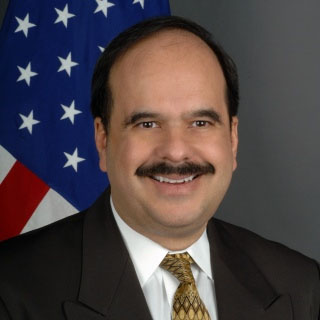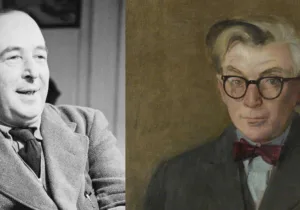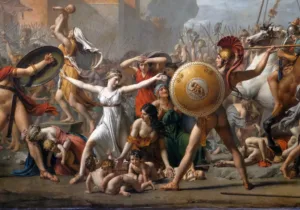Spending a good part of my adult life overseas has often given me a skewed perspective on life in the United States. I think it has made me appreciate America more and also place its many imperfections and faults in a broader cultural context.
As mobs and politicians in the United States target historical monuments and statues, seeking to purify the past of all they find objectionable—there seems to be a constantly evolving graduated scale—I’ve been thinking about statues I saw during various diplomatic assignments. There was the bronze equestrian statue of Nicaragua’s General Anastasio Somoza Garcia, supposedly originally intended to be for Benito Mussolini, brought down in July 1979 during the Sandinista Revolution. Only part of the horse’s hindquarters remains. Or the giant stone statues of Portuguese explorers and conquerors neatly lined up on a beach in Sao Tome off the Central African coast, as if waiting for the next boat to Lisbon. But both of these situations occurred within the context of the end of revolutionary or colonial wars, where one ruling class was uprooted by another.
Absent the overthrow of one regime by another, most of the world would not and has not responded like Americans (and to a lesser extent, the British) have done in trying to instantly and often violently “deconstruct” symbols of a national history.
The Middle East is not overloaded with statues of historic figures, but they do exist. Some are of imperialists and slavers. In Cairo, you can find an equestrian statue of Muhammad Ali Pasha, the wily Albanian “father of modern Egypt” who also expanded the slave trade and Egyptian colonial rule into the Sudan in the nineteenth century. Johann Burckhardt describes Muhammad Ali ordering two hundred Darfur slaves to be turned into eunuchs as a gift to his Ottoman overlord. Several tarboush-wearing statues of his royal progeny, also beneficiaries of the African slave trade, still exist in Cairo even after the monarchy was overthrown in 1953.
For even more graphic examples of this phenomenon, one must journey to Istanbul, the old capital of the Ottoman Empire. Of course, Mehmet II the Conqueror, who took the city in 1453, and extinguished the Roman Empire, has a statue. He succeeded in expanding Ottoman rule deep into the Christian Balkans by military conquest. Ottoman rule in those centuries was based on military prowess driven in part by the devshirme, the child tax Ottomans imposed on subject Christian peoples. The empire took young boys from their families, forcibly converted them to Islam, and turned them into soldiers and administrators. Some rose to high office. But this was, of course, a coercive, colonial process occurring at precisely the same time as the conquest and settling of the Americas.
Aside from the statues of conquering sultans, Istanbul also has a monument to the great sixteenth-century Ottoman Admiral Hayreddin Barbarossa, famed for not only for his boldness in battle but for his raids on Christian lands where he took thousands of people as slaves. One can say with confidence that Barbarossa was a bigger slaver than, say, Columbus. Turgut Reis, another famed and feared Ottoman mariner with his own statue in Istanbul, enslaved the entire population of Gozo, a Maltese island.
This is not an essay in anti-Islamic whataboutism, that Turks and Egyptians are hypocrites or that their statues must be purged. Although it is tempting when one remembers Turkey’s authoritarian ruler Recep Tayyip Erdogan, the jailer of journalists and persecutor of Kurds and religious minorities, decrying American racism and fascism in the aftermath of the George Floyd killing. There is a certain symmetry between East and West: the symbols most likely in danger of coming down in the Middle East are those of the West and Christianity, very much like what happens in Western Europe and America.
No, the countries of the Middle East are, in this case, not so different from so many others. National symbols, a certain historical narrative, the exalting of civic pride, and a perceived uniqueness are seen as good things that matter in much of the world and not just with ruling strongmen. It is the Western play-acting vandal/revolutionaries, and their masochistic corporate sponsors, who are the global outliers. Others outside the West still see these heroes—their Muhammad Ali Pashas, their Mehmets II, and others—as founders and builders of something positive with enduring value, even if they were not perfect men. The fact that these historic Muslim rulers and commanders were—to use the latest fashionable standards of the West—imperialists, conquerors, and slavers doesn’t seem to weigh very heavily on local populations nor trouble their conscience and faith. Some in the West will look at such views as backward and authoritarian, but it is our elite (and its globalist echo chamber elsewhere) who are in the small minority.
As demonstrations and direct action developed in the past month, particularly in the United States, I have received a wide range of responses from interlocutors in the Middle East. Some in the region, America’s enemies like Erdogan, are gloating and delighted that images of falling American symbols are easy to see. The fact that Americans are doing this against America confirms every wild notion of the United States these enemies have held and spouted for decades. “You see,” they’ll say in Damascus and Cairo and Tehran, “America is rotten and evil, just as we’ve said all along.”
Other, more thoughtful voices in the region have told me how these events horrified them. While not excusing American police brutality and racism—they’ve seen worse in their countries—they see an America that is turning on itself and turning inward, that seems to have no core or faith in itself. The nation appears to be suffering a very public nervous breakdown. American policies have at times exasperated them, but they still see us as playing an unenviable and essential global role and often, as a refuge.
None of this is to say that we need to imitate other countries, or that they should imitate us in our narcissistic iconoclastic frenzy. But perhaps seeing our sweeping condemnations—of ourselves—through a global lens should give us pause.







 Sponsor a student for Christianity & National Security 2024
Sponsor a student for Christianity & National Security 2024